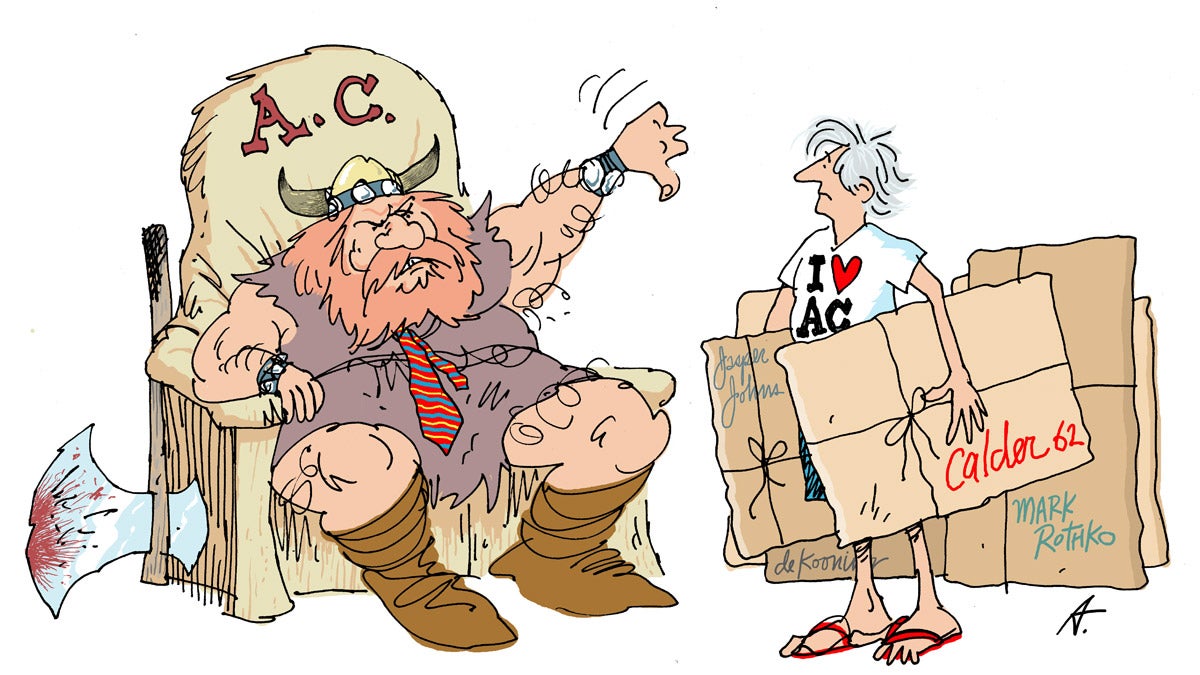How Atlantic City killed an art museum and missed a golden opportunity

The open-air sculpture museum being curated by Lance Fung in the heart of Atlantic City calls to mind a similar tale. Legendary Philadelphia architect Louis Kahn once had a plan to make Atlantic City an art destination. It didn’t go so well.
The following is a work of opinion submitted by the author.
I note with pleasure the open-air sculpture museum being curated by Lance Fung in the heart of Atlantic City. I note with displeasure the response of the citizens of Atlantic City to this small but important effort to widen the appeal of our town: They don’t like it.
This called to mind another tale of art and Atlantic City. It is a story few know, perhaps no one still alive other than I. It is about a moment that could have altered Atlantic City’s future.
Sometime in the 1960s, I was at my desk in my shop at the old Marlboro-Blenheim Hotel when the phone rang.
“Good morning, Reese, this is Louis Kahn,” I remember the voice saying. Louis Kahn, the legendary Philadelphia architect — I was all ears.
Kahn went on to tell me that he had accumulated a collection of contemporary art and had been looking for a place to house it after his death. He said he wanted to design a museum to house the collection and would raise the money to build it in Atlantic City. All the city would have to do was provide a site.
I was amazed. I thought of what this might mean to my town and why in the world Kahn chose it — a place without a shred of culture. Kahn explained that having grown up in Philadelphia, he owed many happy memories to his summers spent at the Shore. He wanted to repay his debt to Atlantic City.
In one stroke, I thought, Kahn’s proposal could make Atlantic City an art destination. The museum could lend meaning to a city that had become old and pointless. It could even bring studios, galleries, and artists seeking a home on the Atlantic Coast.
I knew just one man who could clear away all the obstacles to such a project: State Sen. Frank S. “Hap” Farley, Atlantic City’s undisputed political power broker. He was the “go-to guy,” holding all the reins of government. I went to him with shining eyes and renewed hope.
In Farley’s office the next morning, I laid this wonderful prospect at his feet as I described a brilliant future for his city. I told him that just a building by Louis Kahn, let alone any art he had collected, could change the town. I told him that all the costs would be taken care of, that all he needed to do was provide a site. I even had one in mind already: a small, green area facing Atlantic City High School. It was perfect.
Having made my pitch, not really thinking that a pitch was needed, I leaned back and waited for Farley to speak. When he did, what I heard stunned me.
No, Farley said, he didn’t like the idea at all. He did not want any new, potentially disruptive force to come into his town and threaten his political control.
In that moment, Hap Farley, thinking not of the desperate condition of Atlantic City but only of his personal political power — along with many like-minded people after him — helped condemn an entire city to a slow death.
—
Reese Palley is a writer and former art dealer who lives in Philadelphia.
WHYY is your source for fact-based, in-depth journalism and information. As a nonprofit organization, we rely on financial support from readers like you. Please give today.

